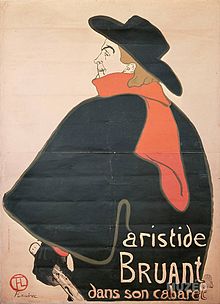 |
| Nijinsky |
p 316 | Jean Jaurès (French politician & historian, 1859–1914) was a French Socialist leader.
p 320 | rhino-gomenol: a decongestant & antiseptic ointment which Proust himself frequently used.
 p 327 | Aristide Bruant (1851–1925) was a French cabaret singer, comedian, and nightclub owner.
p 327 | Aristide Bruant (1851–1925) was a French cabaret singer, comedian, and nightclub owner.p 328 | Maria Sophie in Bavaria (Queen of Naples, 1841–1925) was the last Queen consort of the Kingdom of the Two Sicilies.
Empress Elisabeth of Austria and Duchesse d'Alençon were her sisters. Her niece, Elisabeth of Bavaria, Queen of Belgium (1876–1965) married Albert I (1875–1934), who reigned as King of the Belgians from 1909 to 1934.
p 331 | Norns: in Norse mythology, female beings who rule the destiny of gods and men. They roughly correspond to other controllers of humans' destiny, the Fates, elsewhere in European mythology.
p 334 | Sibyl: certain women of antiquity reputed to possess powers of prophecy or divination or supposed to utter the oracles and prophecies of a god.
p 337 | Kinderszenen ("Scenes from Childhood"), Opus 15, by Robert Schumann, is a set of 13 pieces of music for piano written in 1838. "Child Sleeps" and "Poet Speaks" are two titles from the work. Hear samples at this link.
p 339 | The Sistine Chapel ceiling, painted by Michelangelo between 1508 and 1512, is a cornerstone work of High Renaissance art.
p 350 | Song to the Evening Star & Elizabeth’s Prayer, both from Wagner's 1845 opera Tannhäuser. Tristan, Rhinegold, and the Mastersingers are other operas by the German composer, Richard Wagner, 1813-83.
p 351 | "...Pas d'Armes du Roi Jean.... the Contemplations...": Early vs later works by French author Victor Hugo, 1802-85.

